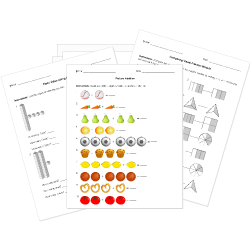Common Core Standard HSN-RN.A.1 Questions
Explain how the definition of the meaning of rational exponents follows from extending the properties of integer exponents to those values, allowing for a notation for radicals in terms of rational exponents. For example, we define 51/3 to be the cube root of 5 because we want (51/3)3 = 5(1/3)3 to hold, so (51/3)3 must equal 5.
You can create printable tests and worksheets from these questions on Common Core standard HSN-RN.A.1! Select one or more questions using the checkboxes above each question. Then click the add selected questions to a test button before moving to another page.







